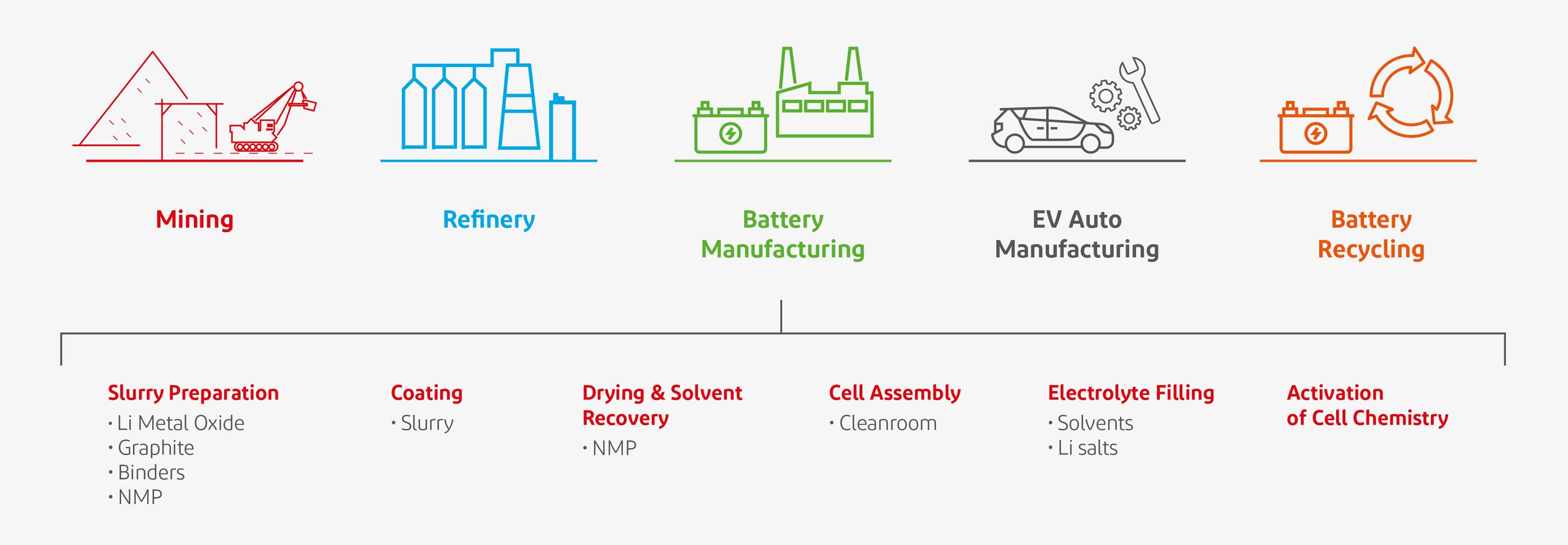Lithium-Ion Battery Manufacturing
PROTECTIVE SOLUTIONS FOR LITHIUM-ION BATTERY MANUFACTURING

Workers Manufacturing and Handling Lithium-Ion Cells & Batteries are Exposed to Diverse Hazards
Lithium-ion batteries (LIBs) are currently the dominant technology for Electric vehicles (EVs). Energy, in the form of electricity, is discharged from the battery cell when lithium-ions flow from the negative electrode, or anode, to the positive electrode, or cathode. When the cell is charging, those ions flow in the opposite direction, from cathode to anode.
However, some possible lithium-ion battery materials are toxic, carcinogenic, or could undergo chemical reactions that produce hazardous heat or gases. The major weakness of lithium-ion batteries in electric cars is the use of organic chemicals, which are volatile and flammable when operating at high temperatures.
DuPont provides a wide range of disposable chemical protective clothing, single-use cleanroom apparel, and flame-resistance fabric solutions to protect the people who encounter hazardous materials in battery cell or battery materials production.


Tyvek® 500 Xpert is setting a new standard of protection in the Type 5 and 6 category through greater protection and comfort.

Tyvek® 600 Plus combines Type 4 performance with the durability, protection and comfort of a Tyvek® garment.

Tychem® 2000 C is comfortable, lightweight protection against biohazards and inorganic chemicals.

Tychem® 4000 S is a new comfortable alternative against a broad range of inorganic and organic chemicals.

Tychem® 6000 F is trusted protection against a broad range of chemicals and biohazards.

Tychem® 6000 F ThermoPro is a single layer, triple-threat protection (chemical, heat & flame, electric arc) for 360° protection.

Nomex® Comfort provides extreme performance in a lightweight, soft-touch, breathable fabric with built-in flame resistance.
